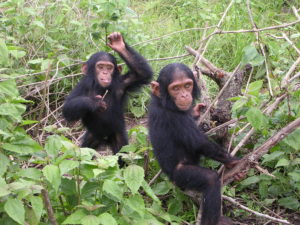 The most endangered great ape has been living in the canopies of the Malaysian and Indonesian rain forests. For starters, the great ape resembles a human being in many ways. Scientists have shown that these apes have 97 percent DNA that’s similar to that of human beings. At the same time, they are known for their remarkable vocal abilities and their orange fur. As of now, there are only two species of the original six living on the islands of Sumatra and Borneo. Others include bonobos, chimpanzees, Western African gorillas and Eastern African gorillas. The last four live in Africa. However, a recent research going down in decades suggests that there is a seventh species other than the original six. The new species is being referred to as Tapanuli orangutan, and it’s said to live in the upland forests that are found in Sumatra island of Indonesia. This study was conducted by a team of international scientists. They went ahead and published their findings in the journal of Current Biology on Thursday. A conservation scientist working with the study known as Dr. Erik Meijaard said that they discovered the species 20 years ago at a place called Lake Toba. He, however, said that it took them close to 20 years to get the morphological and genetic data needed for their case. Dr. Meijaard works at the Australian National University.
The most endangered great ape has been living in the canopies of the Malaysian and Indonesian rain forests. For starters, the great ape resembles a human being in many ways. Scientists have shown that these apes have 97 percent DNA that’s similar to that of human beings. At the same time, they are known for their remarkable vocal abilities and their orange fur. As of now, there are only two species of the original six living on the islands of Sumatra and Borneo. Others include bonobos, chimpanzees, Western African gorillas and Eastern African gorillas. The last four live in Africa. However, a recent research going down in decades suggests that there is a seventh species other than the original six. The new species is being referred to as Tapanuli orangutan, and it’s said to live in the upland forests that are found in Sumatra island of Indonesia. This study was conducted by a team of international scientists. They went ahead and published their findings in the journal of Current Biology on Thursday. A conservation scientist working with the study known as Dr. Erik Meijaard said that they discovered the species 20 years ago at a place called Lake Toba. He, however, said that it took them close to 20 years to get the morphological and genetic data needed for their case. Dr. Meijaard works at the Australian National University.
The study found out that the population of the Orangutans is dangerously endangered. The situation is critical in some areas. For instance, the scientists said that the current species lives in a 425 square mile area and involves a species known as Tapanuli orangutan or Pongo tapanuliensis. The group carrying out the research discovered that there were only 800 apes left. Back in 2013, the same scientists discovered a skeleton of the ape in the study. The animal had been killed by local residents. They say that they discovered that the skull portrayed some characteristics that make them different than the Sumatran orangutans. This is according to the events of a conservative biologist known as Mattew G. Nowak. The same analogy was given by a professor from the University of Zurich known as Michael Krutzen. When Dr. Birute Mary Galdikas heard about the discovery, she said that she was not surprised. She had lived over 46 years as a primatologist and had been responsible for conservation efforts in the same region. She said that she had discovered these animals 50 years ago.


